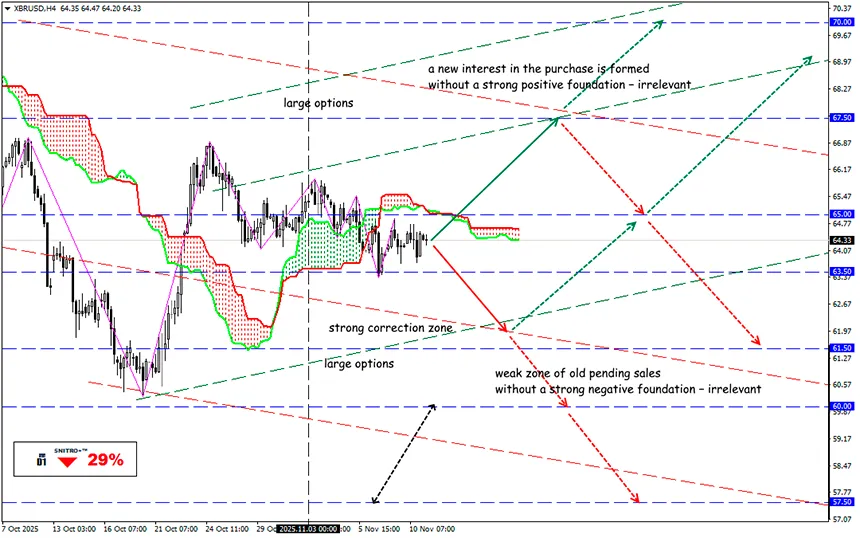A New Conflict in the Caribbean Sea: Standard Commodity Blackmail

XBR/USD
Key zone: 63.50-65.00
Buy: 65.50(on strong positive fundamentals); target 67.50; StopLoss 64.80
Sell: 63.00(after retesting the 64.50 level); target 61.50-61.00; StopLoss 63.70
A U.S. military operation against Venezuela and the return of control over local oil fields to American companies could flood the market with “fresh” oil and drive prices down to critical levels.
For context: Venezuela is the world leader in proven oil reserves. According to OPEC’s 2024 Statistical Bulletin, the country accounts for about 20% of global reserves — 303.01 billion barrels. Venezuela produces rare, valuable crude — heavy and extra-heavy grades (for example, the ultra-heavy Orinoco crude) — for which special refineries were built in the U.S. and Asia. Light shale oil will never replace them in productivity or margins.
While the official reason for the escalation remains unclear, it’s assumed that Trump plans to overthrow the Maduro regime and unblock Venezuelan oil exports. In such a scenario, global oil prices could fall to $30 per barrel.
Several factors drive the conflict:
- The Venezuela-Guyana dispute over the oil-rich Essequibo region — the U.S. has intensified military cooperation with Guyana; maritime incidents and temporary moratoriums in disputed waters have been recorded.
- Venezuela’s political climate after the 2024 national elections — the U.S. has repeatedly tightened sanctions for violations of electoral commitments.
- In 2025, Washington changed authorization terms several times for U.S. oil companies (Chevron and others), but never fully revoked the licenses. This effectively turned American sanctions into a tool of blackmail, directly influencing oil exports.
Fifty years ago, Venezuela produced four times more oil than it does today. While the disappearance of 1 million barrels per day went largely unnoticed a decade ago, the return of that volume now — especially through military intervention — poses a serious risk.
- Any military operation could go off-script. Venezuela’s ports, storage facilities, and logistics are highly vulnerable. Tanker insurers are already alarmed by the risk of airstrikes — and problems are mounting even before an operation begins.
- The idea that foreign investments would flood the country after Maduro’s fall is overly optimistic. PDVSA’s production infrastructure is degraded, service companies are absent, and logistics are broken. Recovery would take at least two years.
- Since losing Russian crude, Europe has grown overly dependent on U.S. supplies. If American refineries lose access to heavy crude, fuel production will drop. Even if the global balance holds, Europe will pay more. Of course, Trump doesn’t care much about Europe — but other consumers do.
- A war with the Maduro regime would cause a genuine supply chain rupture. Even without direct combat, escalation would raise the Brent risk premium, deepen shortages of heavy crude, and push up freight and insurance costs.
If American firms return to Venezuela and sanctions are lifted, supply of heavy grades would increase, applying moderate downward pressure on Brent over the next 6–24 months.
Interestingly, U.S. gasoline demand is now at its lowest seasonal level since 2012, while refinery utilization has dropped to 86%. This makes the situation ideal for U.S. refineries: a return of cheap heavy oil cuts raw material costs and stabilizes diesel spreads.
A full-scale conflict may not occur if Trump reactivates the “TACO” system (Trump Always Chickens Out), or if Caracas simply accepts all U.S. terms — though that seems unlikely. The market awaits further developments.
So we act wisely and avoid unnecessary risks.
Profits to y’all!

















